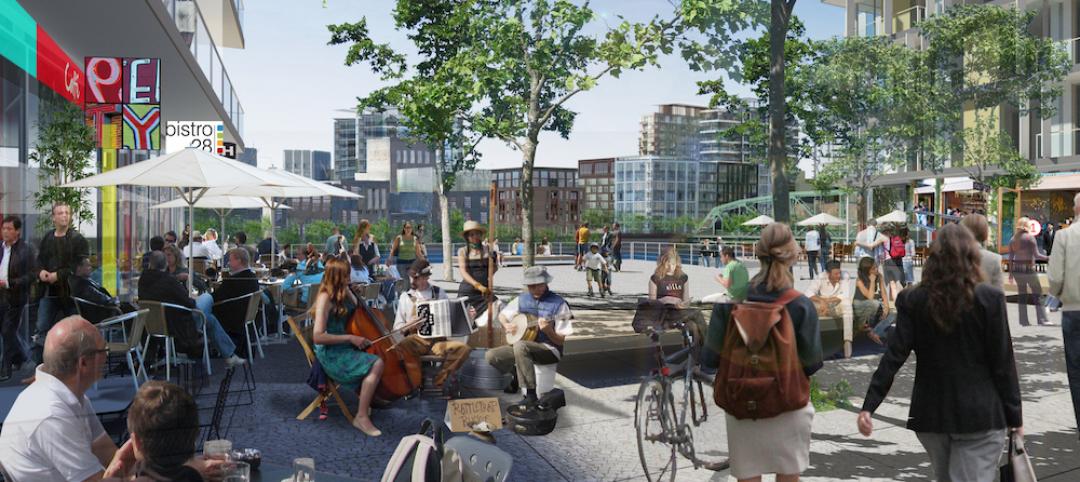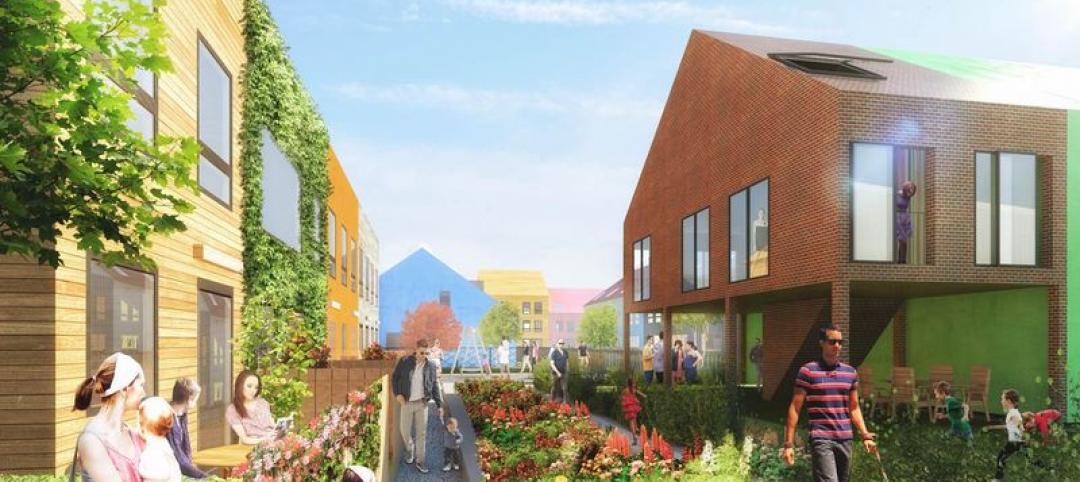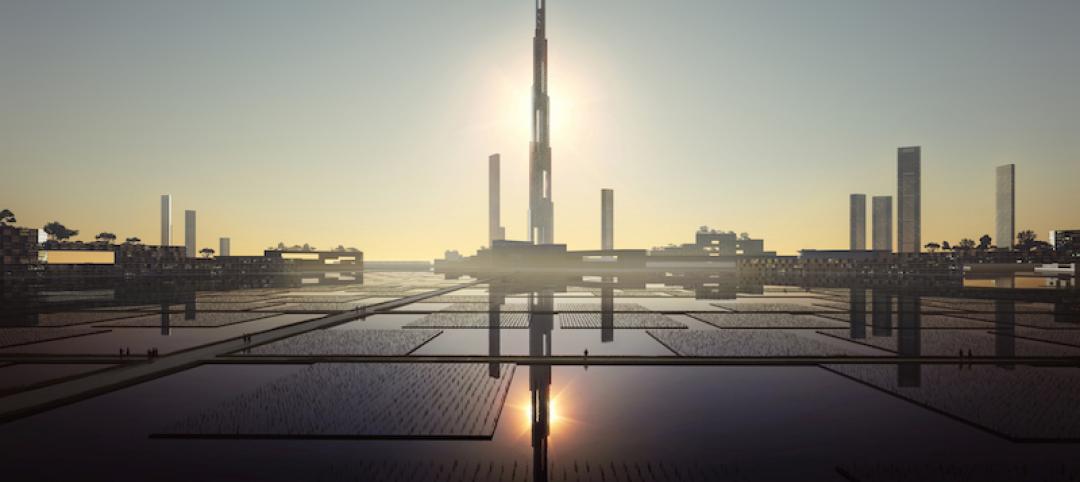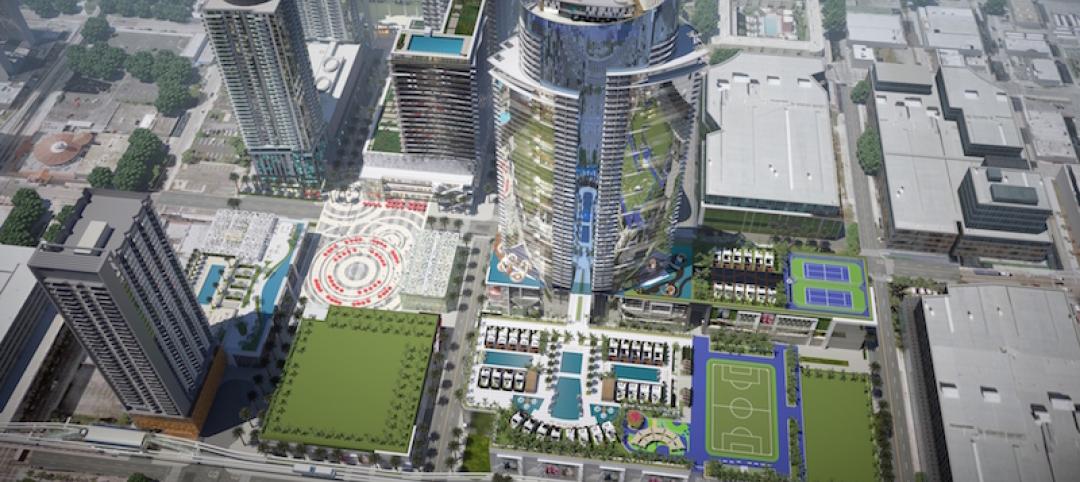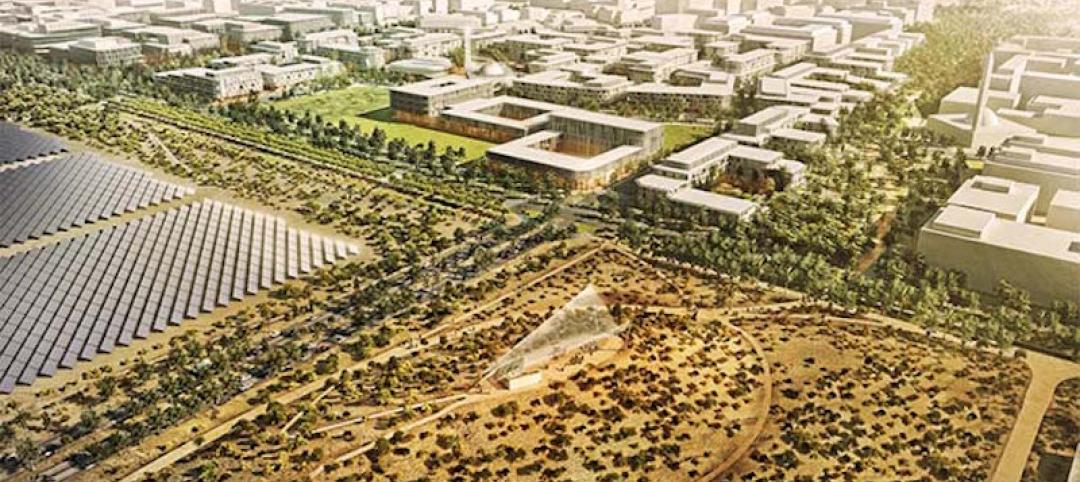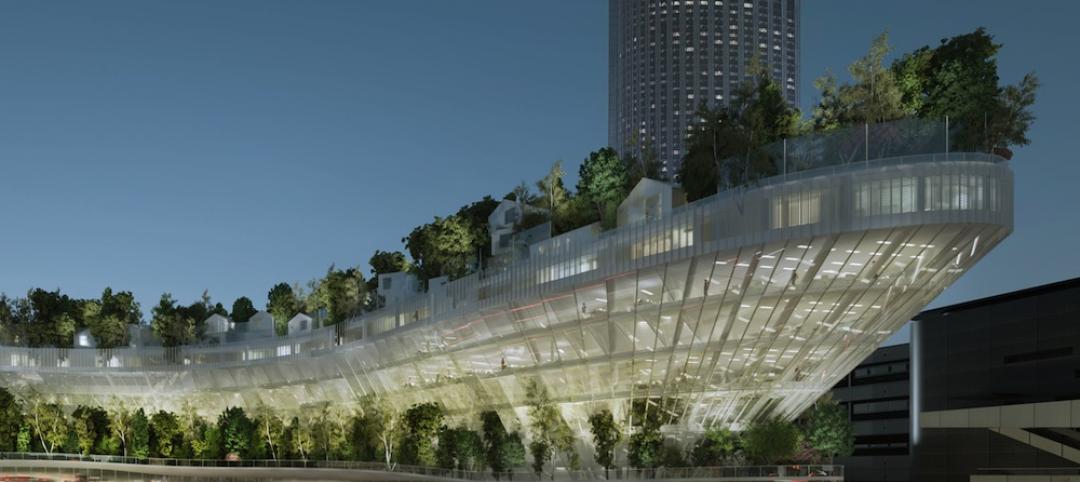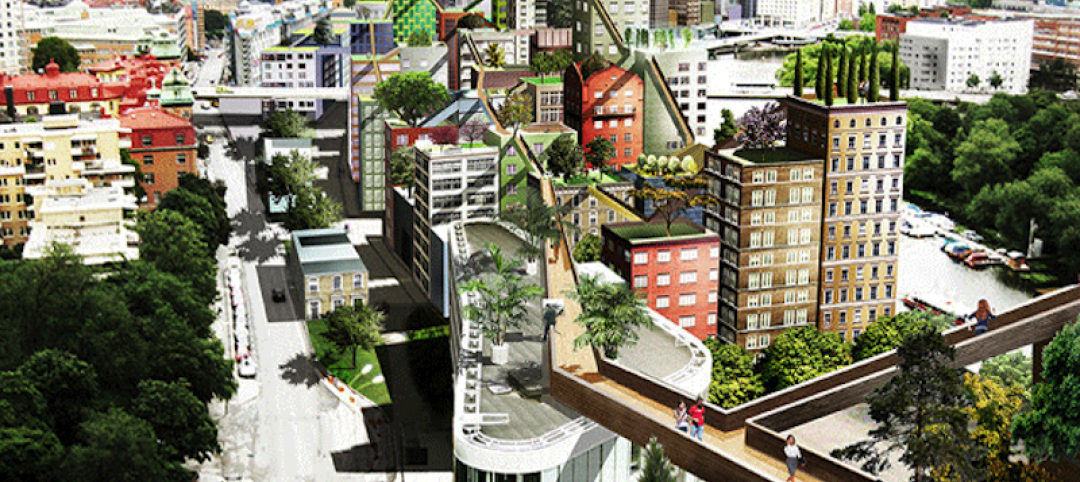One-quarter of city dwellers draws a line that connects the economic and environmental challenges of urban living with negative impacts on their mental health and well-being, and nearly as many urbanites say the challenges can affect them physically.
Those are some of the key findings in an “Architects of Change” report, based on an 11-question survey of 4,024 city dwellers in the U.S., United Kingdom, Germany, and Italy, commissioned by Chaos, a global leader in 3D visualization tools, and conducted on January 3-8, 2024, by Censuswide.
The report combines a rather bleak portrayal of city living with analysis—by John M. Cays, Associate Dean for Academic Affairs at New Jersey Institute of Technology’s Hillier College of Architecture and Design—that offers suggestions about how architects and designers might visualize the city of the future in ways that make urban living more palatable for residents, especially those age 35 to 44 who are most likely to purchase a house and become parents.
Climate change is adding stress to urban living
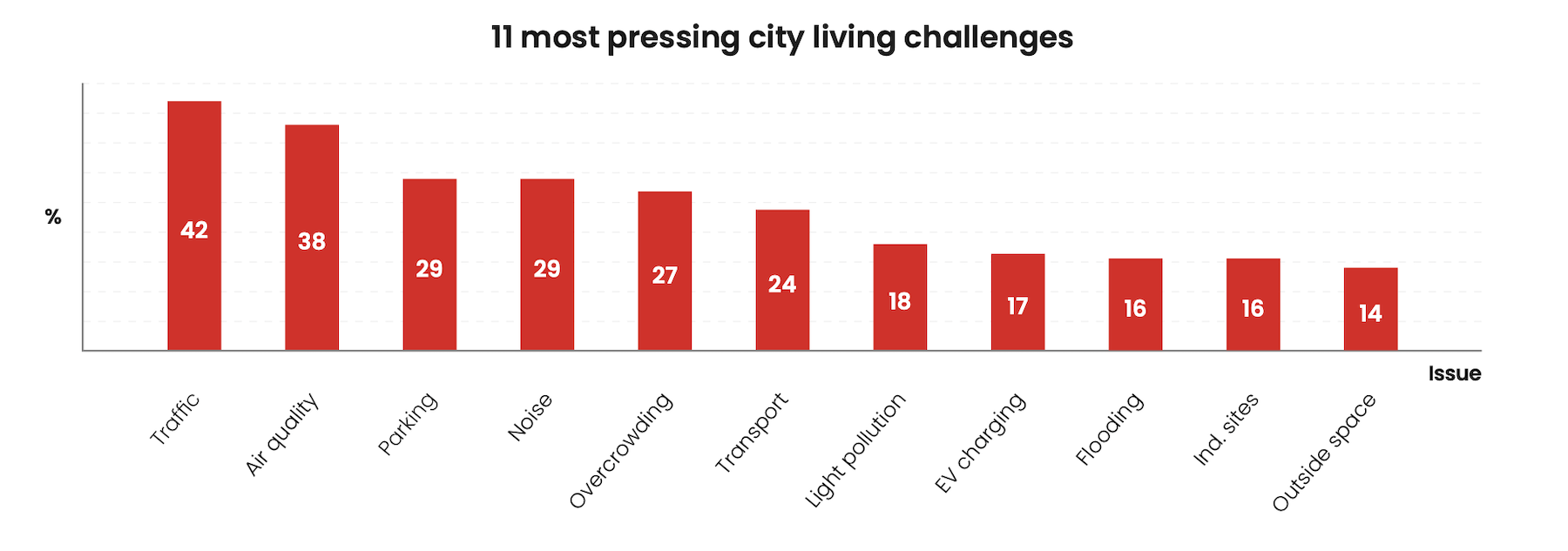 While the respondents were pretty evenly divided among age, income, and geographic cohorts, the “common” respondent lives in a three-person household. Ten percent lives alone, and 13 percent lives in a household of five or more people. The respondents ranged from 16 to 55-plus years old, with the greatest portion falling within 35 and 44. Fifty-six percent of respondents—and 70 percent in the U.S. and Italy—owns homes outright.
While the respondents were pretty evenly divided among age, income, and geographic cohorts, the “common” respondent lives in a three-person household. Ten percent lives alone, and 13 percent lives in a household of five or more people. The respondents ranged from 16 to 55-plus years old, with the greatest portion falling within 35 and 44. Fifty-six percent of respondents—and 70 percent in the U.S. and Italy—owns homes outright.
Nearly three-quarters, 73 percent, of the survey’s respondents have lived in cities for at least five years. But that number drops to 28 percent when so-called nonnatives—people who were born in cities and have lived there all their lives—are excluded.
(The report links mobility and income. Among respondents with incomes of more than $45,501, the number of nonnatives who have lived in cities five years or fewer exceeds those who have lived in cities five years or more.)
The urban living experience can be stressful, especially when now when housing prices and rents are escalating. Sixty-three percent of respondents connect how much they pay for housing with declines in their quality of life. Nearly half, 47 percent, were considering moving to less-expensive housing markets. And 73 percent worry about the rising cost of energy.
City dwellers must put up with all kinds of annoyances, too. Forty-two percent of respondents cited traffic congestion, followed by access to parking (29 percent) and noise pollution (29 percent). The good news for AEC firms is that these complaints leave open the door for building improvements in soundproofing and in-home air filtration.

Cities are also at the doorstep of climate change, and their residents are noticing. Fifty-seven percent of respondents said they feel temperate extremes that affect their mental health and well-being. Another 21 percent cited weather extremes as a reason for moving. Three-fifths of respondents said they are willing to pay for solar panels that would lessen the impact of environmental change. And more than one-quarter of those survey sees climate change as a driver for storm- and floodproofing their homes.
(One finding that’s hard to explain: households with six or more people expressed the least concern for environmental design changes.)
Does urban living reinforce enduring home qualities?
More than three-fifths of those polled say that urban living places more economic pressure on them. Not surprisingly, lower-income city dwellers are feeling that pressure more acutely; however, energy costs are palpable as well for higher-income residents who are likely to be living in larger homes that consume more energy.
Cays, the Hillier College dean, observed the rise in micro housing units as one solution to housing inflation. And while the enduring qualities of a home—as a place of refuge, gathering, and repose—will remain constant, Cays can also envision tomorrow’s homes as “simply bathing and sleeping hubs,” with additional needs, like cooking and recreation, more external communal services.
On the climate change front, Cays’ analysis was more general and obvious. He said that any solutions must reflect geographic diversity, and that understanding building performance can make cities more adaptable to change.
Millennials are vulnerable to urban living pressures
 The report presents Millennials as the lifeblood of cities, but also as the age group most vulnerable to the pressures of urban living. Their biggest reason for leaving cities is rising housing costs. And if cities can’t hold onto their Millennial residents and attract new ones, those cities are likely to close schools, lose small businesses and entertainment venues, and see declines in the arts, healthcare, and open spaces.
The report presents Millennials as the lifeblood of cities, but also as the age group most vulnerable to the pressures of urban living. Their biggest reason for leaving cities is rising housing costs. And if cities can’t hold onto their Millennial residents and attract new ones, those cities are likely to close schools, lose small businesses and entertainment venues, and see declines in the arts, healthcare, and open spaces.
Cays said that architects can visualize urban design that supports families, provides schools and open spaces, and “incentivizes the protection and promotion of communities.”
Related Stories
Urban Planning | May 16, 2016
5 steps to creating high-performance communities
Perkins+Will's Noah Friedman and Kristen Hall break down the essential ingredients to create a neighborhood that's accessible, comfortable, and vibrant.
Urban Planning | May 4, 2016
Brookings report details how different industries innovate
In the new report, “How Firms Learn: Industry Specific Strategies for Urban Economies,” Brookings' Scott Andes examines how manufacturing and software services firms develop new products, processes, and ideas.
Urban Planning | Apr 19, 2016
MVRDV wants to turn a former US Army barracks in Germany into a model for the future of suburban living
Blending traditional families with young couples and the newly retired, MVRDV hopes to transform traditional suburbs into diverse communities of shared experiences
High-rise Construction | Mar 10, 2016
Bigger, taller, wider: London’s skyline is about to have a major growth spurt
More than 100 tall buildings have been added to the plans for the capital city since this time last year, and the overall number of tall buildings planned for London is now over 400.
High-rise Construction | Feb 25, 2016
Kohn Pedersen Fox wants to build a mile-high tower in Tokyo
The tower would be the centerpiece of Next Tokyo, a mini city in Tokyo Bay adapted to climate change and rising tides.
Mixed-Use | Feb 18, 2016
New renderings unveiled for Miami Worldcenter master plan
The ‘High Street’ retail promenade and plaza is one of the largest private master-planned projects in the U.S. and is set to break ground in early March.
Green | Feb 18, 2016
Best laid plans: Masdar City’s dreams of being the first net-zero city may have disappeared
The $22 billion experiment, to this point, has produced less than stellar results.
Urban Planning | Feb 9, 2016
Winners named in 'reinventing Paris' competition
Architects submitted projects that redeveloped key parts of the city and incorporated green space features.
Urban Planning | Feb 2, 2016
Report identifies 600 cities that will drive economic growth through 2025
Of them, 440 are in emerging economies in China, South Asia, and Southeast Asia.
Urban Planning | Jan 21, 2016
Anders Berensson Architects re-imagines Stockholm as a city of skywalks
The Swedish firm’s "Klarastaden" plan connects the city via clear skyways that weave in and around the city’s buildings.



